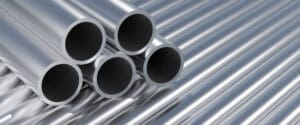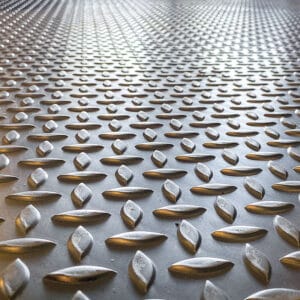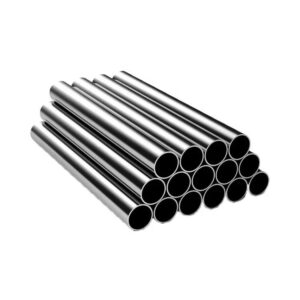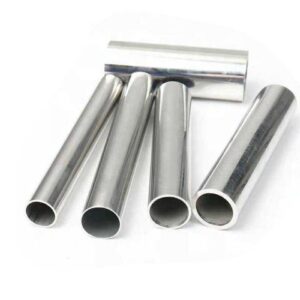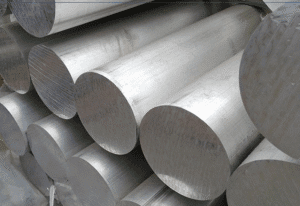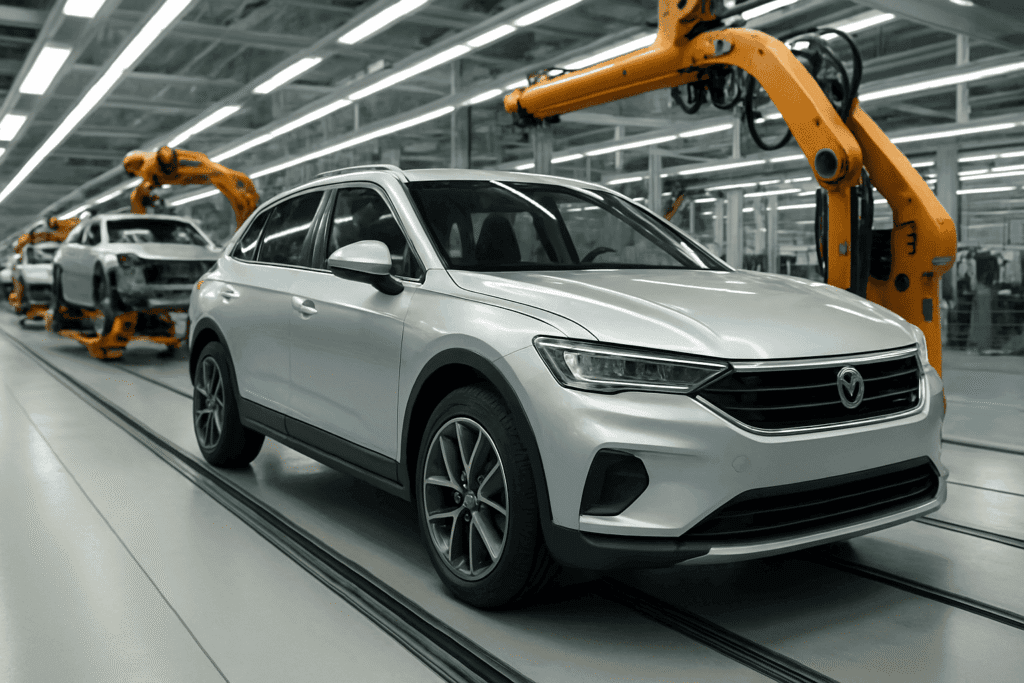Introduction —
aluminum alloy tubes in new energy vehicles are a foundational material choice for modern EV design. From battery enclosures and heat exchangers to crash structures and chassis members, alloy tubing delivers a combination of low mass, good stiffness, thermal conductivity, and recyclability that automakers need to hit range, safety and sustainability targets. This article expands the earlier overview with deep-dive case studies from major OEMs — Audi, BMW, Tesla, Rivian, Lucid, NIO and BYD — showing how each uses aluminum alloys (and tubing or tubular-style structures) in real products and why those choices matter.
Why aluminum alloy tubes matter for NEVs — technical recap
Aluminum alloy tubes offer a high strength-to-weight ratio, predictable energy absorption, and excellent thermal conductivity — properties that map directly to EV priorities: increase range (weight reduction), protect expensive batteries (structural crash protection and thermal paths), and enable sustainable manufacturing (recyclability). Beyond the raw material properties, aluminum is widely available in multiple forming routes relevant to tubes: extrusion (for hollow profiles), cold drawing, and hydroforming — all enabling complex cross-sections used in vehicle frames and battery surrounds.
Case Study — Audi: aluminum surrounds for battery protection
Audi’s e-tron architecture uses a mixed steel/aluminum body where the battery housing and the high-voltage module surround incorporate significant aluminum content. Audi specifically designed “a strong surround frame and lattice-type aluminum structure that holds the cell modules” to protect the battery block and to provide integrated crash structures. This approach shows how aluminum framing (often made from tubular or lattice-style components) is used primarily for battery protection and controlled deformation during impacts.
Audi’s choice reflects a trade-off: use aluminum where its lightness and energy absorption are most beneficial (battery perimeter, doors, tailgate), while keeping steel elsewhere for cost or stiffness reasons. For aluminum tubing suppliers, this signals demand for precision-formed, crash-capable hollow sections and welded/extruded junction hardware.
Case Study — BMW i Drive Module: extruded aluminum frames and tubing analogs
BMW’s i-series (i3 / i8 lineage) employs an aluminum Drive Module — a chassis and powertrain carrier built from extruded aluminum sections, die-cast nodes and welded reinforcement plates. Although BMW pairs CFRP passenger cells with aluminum understructures, the Drive Module demonstrates how automakers combine extruded hollow and solid aluminum members to form a rigid, lightweight base that integrates battery, suspension, and motor mounts.
This shows a design pattern where “tubular thinking” (using hollow, extruded or drawn members) yields packaging and stiffness benefits. For suppliers, tolerance control at junctions and the ability to supply extruded hollow profiles that accept cast/aluminum nodes is key.
Case Study — Tesla: aluminum body components & structural battery design
Tesla has long used high percentages of aluminum in vehicle bodies and chassis components (Model S / X historically high aluminum content), and more recently mixes gigacast aluminum parts with advanced steels depending on model and cost tradeoffs. Tesla’s repair and service documentation confirms use of varying aluminum alloys across body components and underlines the industry trend of combining cast, extruded and tubular aluminum parts for structural needs.
Tesla’s approach indicates two opportunities for alloy-tube adoption:
- (1) as traditional extruded or drawn frame/tubular members where repairability and joining matter;
- (2) as part of hybrid assemblies that mate tubes with large castings (e.g., seat or suspension carriers). Suppliers who can certify alloy mechanicals and joining protocols (welding, mechanical fastening, adhesive bonding) will be preferred.
Case Study — Rivian: mixed-material architecture including aluminum alloys
Rivian’s published materials guidance states their body assemblies use steels and aluminum alloys among other materials. Rivian’s skateboard and frame choices (hybrid body-on-frame / unibody concepts) use aluminum alloys for components where corrosion resistance and weight savings are beneficial.
Rivian — as an EV truck maker — needs tubular-like members that resist bending and torsion while keeping payload capacity high. That translates to demand for larger-diameter hollow sections and hydroformed profiles for suspension mounts and crash boxes.
Case Study — Lucid: extensive cast & extruded aluminum for stiffness and NVH control
Lucid Air uses cast and extruded aluminum components for chassis stiffness and to couple the battery pack with suspension mounts. Tech analyses show large, stiff cast-aluminum structures carrying suspension loads and interfacing with battery enclosures.
Lucid emphasizes low NVH and precise stiffness tuning; aluminum tube suppliers can win work by supplying optimized hollow sections that feed into cast interfaces or by developing integrated subframes combining tubes and cast nodes.
Case Study — NIO & BYD: Chinese OEMs leveraging aluminum alloys in chassis modules
NIO markets aluminum-alloy components and cites improvements in stiffness and weight; BYD’s battery and vehicle teardowns (industry analyses) show aluminum protective structures and thermally-managed battery surrounds in several of its models. These OEMs demonstrate rapid adoption of aluminum alloy solutions across the NEV supply chain. nio.comYouTube
For suppliers targeting China’s EV market, flexible production (small batch prototyping) and material-cost optimization are important — OEMs there often iterate faster and emphasize battery protection and thermal integration.
Technical implications for designers and suppliers
- Crash performance vs. mass savings — Tubular aluminum members must be engineered for predictable collapse modes. Designers often use variable wall thickness, tailored cross-sections, or hybrid material inserts to tune energy absorption.
- Joining & assembly — Many OEMs pair extruded tubes with cast nodes or press-fit joints. Welding aluminum requires process control (e.g., TIG/MIG, friction stir for lap joints) and corrosion mitigation. Suppliers must provide FEA-backed crash data and validated joining charts.
- Thermal paths & battery integration — Aluminum tubes used in coolant circuits or as thermal conduits must meet corrosion and fatigue requirements when exposed to coolant chemistry and thermal cycling.
- Recyclability & LCA — Aluminum’s low recycling energy (≈5% of primary) is a major sustainability argument; OEMs factor end-of-life recycling credits into material selection. (See International Aluminium Institute for lifecycle data.)
Practical recommendations for procurement and OEM engineers
- Specify alloy composition (6xxx series for extrusions, 5xxx for marine-grade corrosion resistance, etc.) and temper.
- Request crash and fatigue test reports for tubular profiles.
- Insist on joining method validation for mixed material assemblies.
- Consider integrated subframes: tubes + cast nodes to reduce part count and improve assembly.
Conclusion — outlook and supplier opportunities
Real-world OEM examples (Audi, BMW, Tesla, Rivian, Lucid, NIO, BYD) confirm that aluminum alloy tubes in new energy vehicles are not theoretical — they are being used today in battery protection, chassis modules, thermal systems, and crash structures. Manufacturers that provide validated, high-volume tubular solutions with clear joining and testing data will be well positioned as EV platforms continue to evolve.


